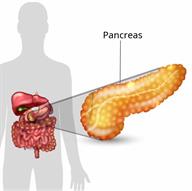ThisisPatientEngagementcontent
Screening for Type 2 Diabetes
Learn more about our Patient Engagement products now! Turn your patients into active participants in their healthcare by giving them easy access to the same evidence-based information you trust – but delivered in an easy-to-understand format.

A screening test for type 2 diabetes (type 2 diabetes mellitus) is a blood test to measure your blood sugar (glucose) level. This test is done to check for early signs of diabetes, before you start having symptoms.
Type 2 diabetes is a long-term (chronic) disease. In type 2 diabetes, you may have one or both of these problems:Normally, insulin lets blood sugar enter cells in the body. The cells use blood sugar for energy.
Insulin resistance or lack of insulin causes extra blood sugar to build up in the blood instead of going into cells. This leads to high blood sugar levels (hyperglycemia). This can cause many problems.
You may be screened for type 2 diabetes as part of your regular health care, especially if you're at high risk for diabetes. Screening can help to find type 2 diabetes at its early stage (prediabetes). Finding and treating prediabetes may delay or prevent you from getting type 2 diabetes.
Risk factors you can change
Risk factors you can't change
Adults
Children and teens
 Your provider may ask about your health and your risk factors, like:
Your provider may ask about your health and your risk factors, like:Your provider will also do a physical exam. This includes a blood pressure check and blood tests.
Four blood tests can be used to screen for type 2 diabetes. You may have one or more of these:Your test results are a measure of how much glucose is in your blood. Normal blood glucose levels mean you don't have diabetes or prediabetes. High blood glucose levels may mean you have prediabetes or diabetes.
You may be diagnosed with type 2 diabetes if:Talk with your provider about what your results mean. More tests may be needed.
This information is not intended to replace advice given to you by your health care provider. Make sure you discuss any questions you have with your health care provider.
Cookies are used by this site. To decline or learn more, visit our cookie notice.
Copyright © 2025 Elsevier, its licensors, and contributors. All rights are reserved, including those for text and data mining, AI training, and similar technologies.